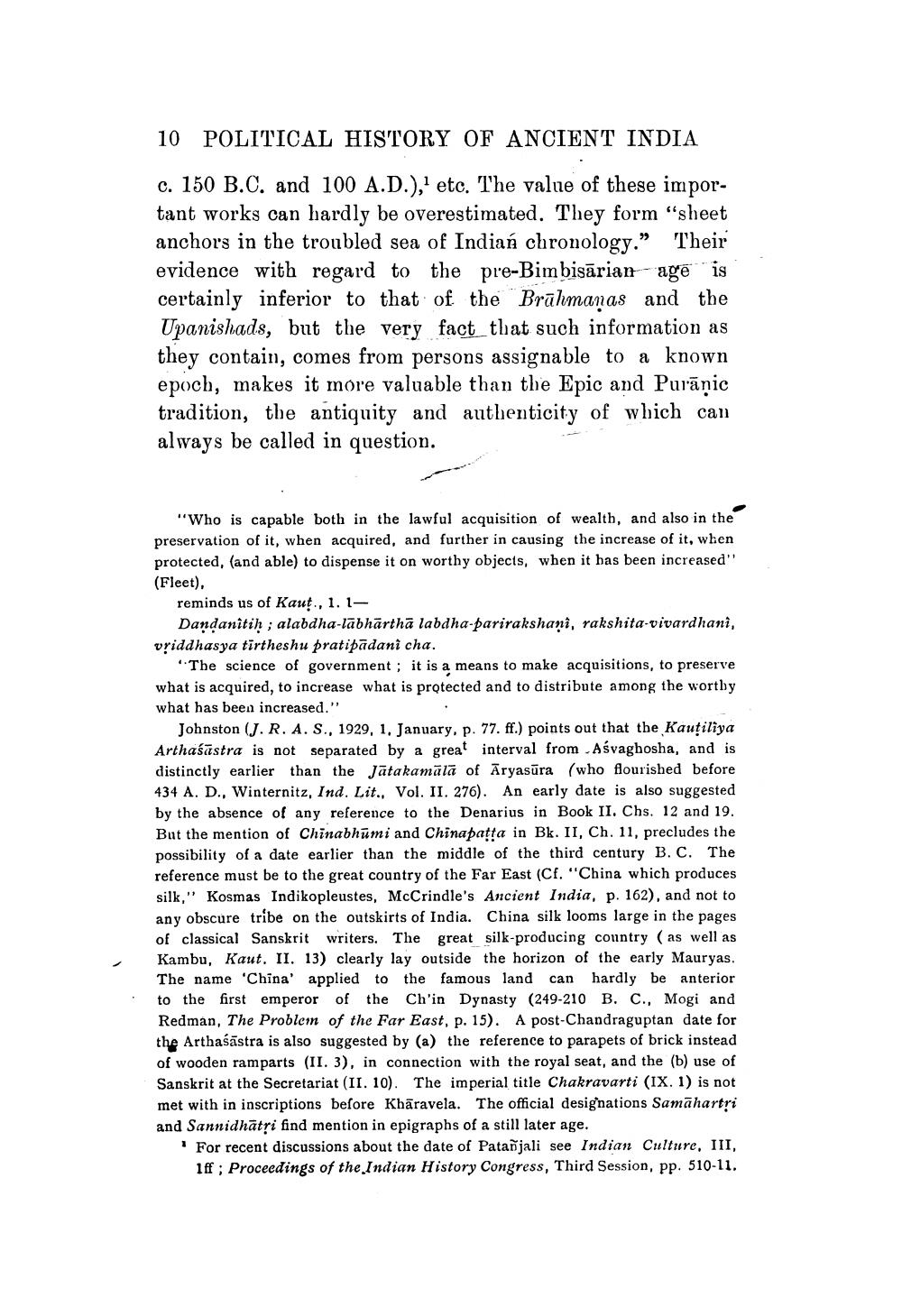________________
10 POLITICAL HISTORY OF ANCIENT INDIA c. 150 B.C. and 100 A.D.), etc. The value of these important works can hardly be overestimated. They form "sheet anchors in the troubled sea of Indian chronology.” Their evidence with regard to the pre-Bimbisārian age is certainly inferior to that of the Brālimanas and the Upanishads, but the very fact that such information as they contain, comes from persons assignable to a known epoch, makes it more valuable than the Epic and Purānic tradition, the antiquity and authenticity of which can always be called in question.
"Who is capable both in the lawful acquisition of wealth, and also in the preservation of it, when acquired, and further in causing the increase of it, when protected, (and able) to dispense it on worthy objects, when it has been increased (Fleet),
reminds us of Kaut., 1.1
Dandanitih ; alabdha-lābhārthā labdha-parirakshani, rakshita-vivardhani, vriddhasya tīrtheshu pratipadani cha.
"The science of government; it is a means to make acquisitions, to preserve what is acquired, to increase what is protected and to distribute among the worthy what has been increased."
Johnston (J. R. A.S., 1929, 1. January, p. 77. ff.) points out that the Kauțiliya Arthaśāstra is not separated by a great interval from Ašvaghosha, and is distinctly earlier than the Jātakamālā of Aryasūra (who flourished before 434 A. D., Winternitz, Ind. Lit., Vol. II. 276). An early date is also suggested by the absence of any reference to the Denarius in Book II. Chs. 12 and 19. But the mention of Chinabhumi and Chinapatta in Bk. II, Ch. 11, precludes the possibility of a date earlier than the middle of the third century B. C. The reference must be to the great country of the Far East (Cf. "China which produces silk," Kosmas Indikopleustes, McCrindle's Ancient India, p. 162), and not to any obscure tribe on the outskirts of India. China silk looms large in the pages of classical Sanskrit writers. The great silk-producing country (as well as Kambu, Kaut. II. 13) clearly lay outside the horizon of the early Mauryas. The name 'China' applied to the famous land can hardly be anterior to the first emperor of the Ch'in Dynasty (249-210 B. C., Mogi and Redman, The Problem of the Far East, p. 15). A post-Chandraguptan date for the Arthaśāstra is also suggested by (a) the reference to parapets of brick instead of wooden ramparts (II. 3), in connection with the royal seat, and the (b) use of Sanskrit at the Secretariat (II. 10). The imperial title Chakravarti (IX. 1) is not met with in inscriptions before Khāravela. The official designations Samāhartri and Sannidhātri find mention in epigraphs of a still later age.
For recent discussions about the date of Patanjali see Indian Culture, III, 1ff; Proceedings of the Indian History Congress, Third Session, pp. 510-11.




